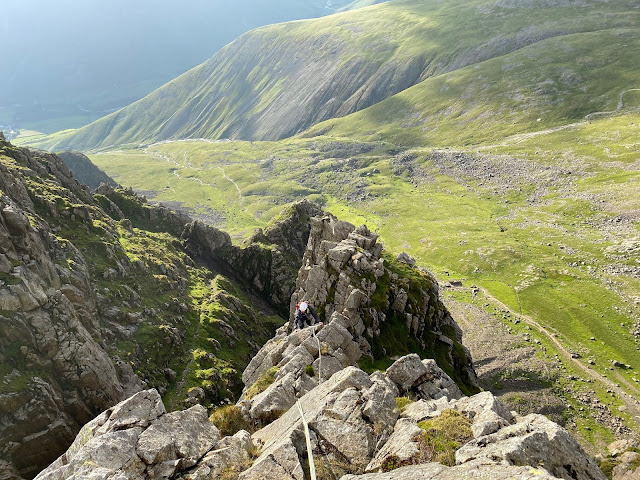The weather waits for no man, but no man with psyche waits
for the weather.
Now travel restrictions are lifted, its back to the hills for
me, but with a slightly different approach than before. Fuel and provisions all
bought close to home, with no stops in toilets cafés or whatever. Doing my bit
I guess. But aren’t we all?
The weather seems to treat lockdown like a midweek day.
Stunning and beautiful weather, until you get some free time, then its back to
pissing rain and swollen rivers. An endless amount of time inside has
certainly given me the enthusiasm to look past the weather though, and just get on with
enjoying some freedom.
With a dreadful forecast but a pocket full of psyche, myself
and Rob found ourselves catching the early ferry across from Inchree to Coran,
with the Great Ridge of Garbh Bheinn fastened in our sights. The guidebook
suggested that the walk up the glen to the upper corie was one of the wettest
approaches in Scotland. Needless to say there was no exaggeration, and our feet
were sodden within 100 m of stepping off the road.
Thick cloud and pulses of rain meant the ridge (and its base..)
remained elusive for the entire walk up. All we had to go on was a pixeled picture
of a topo taken last night on a phone sat on the sofa, which hardly resembled
the swirling mess of white and grey which we saw before us. Not to be disheartened,
we eventually made it to what looked like the start of the direct route, or at
least we convinced ourselves that what we saw before us compared vaguely to the
description of the start and the first pitch. With water pouring down the route
in vast sheets, taking off trainers to don rock shoes was an unappealing
option, so we both initially made-do in trainers. After Rob starting up and securing
a belay, I followed up skating and cursing my trusty fell running shoes, whose lugs
were clearly no match for the sodden and sloping Lewisian gneiss. I set off up
the second pitch only to be barred by a small overlap, which proved too much
for me so put in a belay and handed the reins to Rob. That next pitch proved to
be quite eventful, with a very wandering line up steep and slippery slabs. A great
lead by him. To make up for my misgivings I led the remaining two direct
pitches before we gained the main ridge and then moved together to the top,
with the odd pitch thrown in on the steeper stuff.
Another weekend. Another shit forecast. After backing off on
Direct Route on Great Ridge I was determined to regain some confidence and so
(perhaps foolishly..) myself and Jed set out in the monsoon up to Langdale’s
Bowfell Buttress. Once again I found myself stood under a crag I could not see
the top of through the white and grey gloom of the summer rain. Wind blasted
and soaked to the skin, we set off up the first pitch feeling a combination of
anticipation and dread. Quite a mixture. The heaviness of the rain deterred both
of from adorning rock shoes, so opted to stick with big boots increasing the excitement.
After a few thrutchy pitches we found ourselves below the crux wall on the fifth
pitch. Whilst no more than 5m high, the wall is plum vertical, hosting a very
smooth and wide crack, with plenty of gear but very little in the way of holds.
It is this pitch alone that gives the route its grade of HS 4b. In dry weather
and rock shoes, it would go without incident but was a serious battle in the
deluge we found ourselves in. As such, making it through this crux clean and on-sight
in big boots was a bit of victory and I felt redemption from my cowardess on
Garbh Bheinn.
 |
| Looking up Sca Fell Pinnacle. Our route climbs the short grove then continues more or less in the centre to the top |
 |
| Jed making some very delicate moves on Herfords Slab |
 |
| Jed on the outstandingly exposed knife edge arete between Low Man and High Man on Sca Fell Pinnacle |





















































